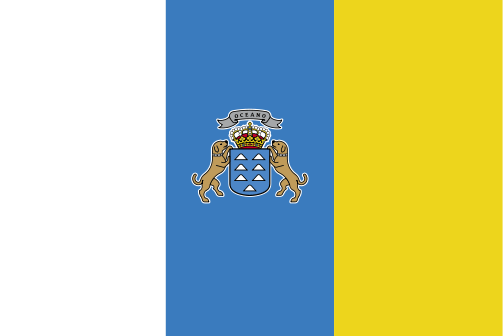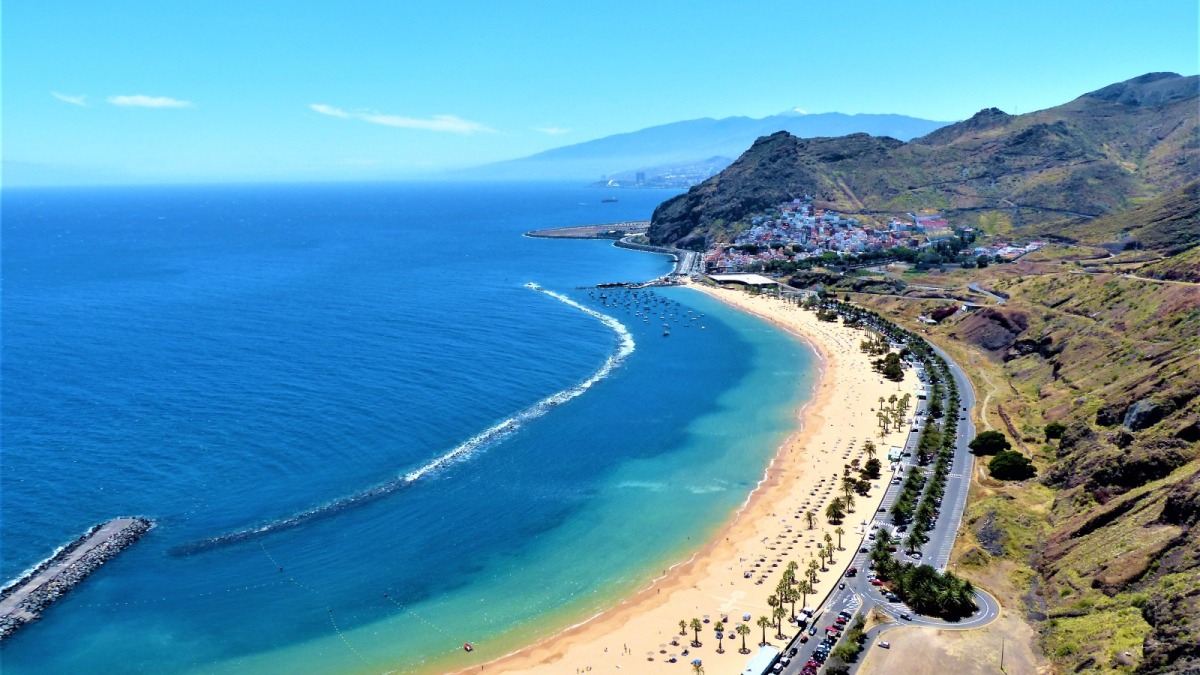
Located off the northwest coast of Africa, the Canary Islands are a Spanish archipelago known for their dramatic volcanic landscapes, year-round sunshine, and rich cultural mix of Europe, Africa, and Latin America. These fast facts offer a quick and practical overview for travelers planning their trip to the islands — whether for hiking Mount Teide, sunbathing in Gran Canaria, or exploring Lanzarote’s unique lava formations.

Quick Overview
- Official name: Canary Islands (Islas Canarias)
- Country: Spain
- Autonomous community: Canary Islands (since 1982)
- Capital cities: Santa Cruz de Tenerife & Las Palmas de Gran Canaria (shared)
- Population: ≈ 2.2 million
- Area: 7,493 km²
- Currency: Euro (€)
- Language: Spanish (Canarian dialect)
- Time zone: GMT (same as the UK)
Geography & Location
The Canary Islands consist of seven main islands — Tenerife, Gran Canaria, Lanzarote, Fuerteventura, La Palma, La Gomera, and El Hierro — plus several smaller islets. They lie approximately 100 km west of Morocco and 1,300 km south of mainland Spain.
- Largest island: Tenerife
- Highest point: Mount Teide (3,718 m) — the highest peak in Spain
- Closest continent: Africa
Climate & Best Time to Visit
Nicknamed the “Islands of Eternal Spring,” the Canaries enjoy mild temperatures all year. With average highs between 20–28 °C, it’s an ideal escape from colder climates at any time of year.
- Average temperature: 22 °C (72 °F)
- Dry season: May to October
- Rainiest months: December to February
- Sea temperature: 20–24 °C year-round
For detailed weather insights by island, see our Canary Islands Weather guide.
Economy & Tourism
Tourism is the backbone of the Canary Islands’ economy, attracting over 12 million visitors annually. Agriculture (bananas, tomatoes, aloe vera) and renewable energy are also significant contributors.
- Main tourist markets: UK, Germany, Spain, France, Italy
- Top attractions: Teide National Park, Timanfaya National Park, Maspalomas Dunes
- Key exports: bananas, wine, and volcanic aloe products
Culture & People
Canarians are known for their warmth, hospitality, and relaxed pace of life. The islands’ culture blends Spanish traditions with African rhythms and Latin American influences. Carnival is celebrated in grand style, especially in Santa Cruz de Tenerife and Las Palmas — second only to Rio de Janeiro in scale and color.
- Religion: Predominantly Roman Catholic
- Major festivals: Carnival (February–March), Corpus Christi, Bajada de la Virgen (La Palma)
- Traditional music: Folk instruments like timple and chácaras

Getting Around
The islands are well connected by air and ferry. Each major island has its own airport, and inter-island flights are frequent and affordable. Buses and rental cars are the best ways to explore within each island.
- Main airports: Tenerife South (TFS), Gran Canaria (LPA), Lanzarote (ACE), Fuerteventura (FUE)
- Inter-island airlines: Binter Canarias, CanaryFly
- Ferries: Naviera Armas, Fred. Olsen Express
Quick Safety & Travel Notes
- The Canary Islands are among Europe’s safest destinations.
- Tap water is safe but often desalinated — bottled water is common.
- Healthcare facilities are modern and part of Spain’s public system.
- Driving is on the right; roads are well maintained.
Fun Facts About the Canary Islands
- The islands’ name comes from the Latin “Canariae Insulae” — “Islands of Dogs,” not canary birds.
- Tenerife’s Mount Teide is the third-highest volcano in the world when measured from the ocean floor.
- Lanzarote’s volcanic park restaurants grill food using geothermal heat!
- Each island has its own flag and distinct local wine.
Where to Go Next
- About the Canary Islands
- Top Destinations in the Canary Islands
- Transportation Guide for the Canary Islands
From Tenerife’s volcanic peaks to Fuerteventura’s rolling dunes, the Canary Islands combine adventure, culture, and relaxation — making them a timeless favorite among travelers seeking sun, diversity, and discovery.
